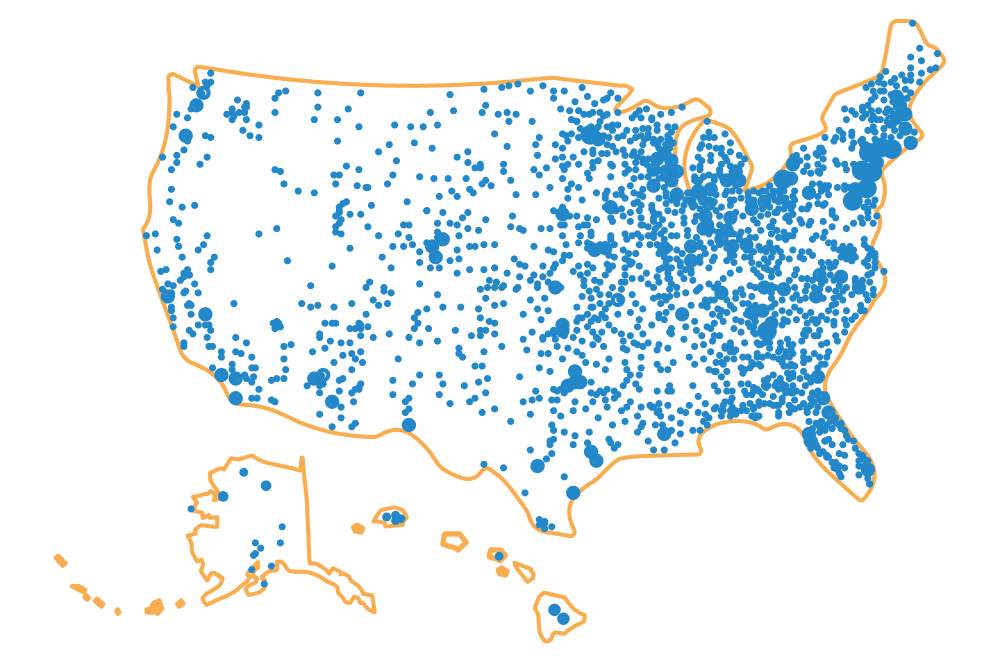If your mind is filled with scary thoughts on how to pay for your children’s future education, then let Ohio 529, CollegeAdvantage, calm your concerns. There are some spooky tales out there about 529 plans. Just in time for Halloween 2024, here’s the truth about all the benefits of saving in a 529 account and how flexible your account can be.
Fear: What if I save in Ohio 529 but my child wants to go out of state?
Truth: Your Ohio 529 college savings account can be used nationwide for whatever school comes after high school for your child–whether for an associate, bachelor’s, graduate, professional, vocational degree, certificate program, or an apprenticeship. If the institution of higher education has a Federal School Code on the Free Application for Federal Student Aid (FAFSA), then you can make tax-free withdrawals to cover qualified expenses there.
Fear: What if my child doesn’t go to college?
Truth: You always have access to the funds saved in your Ohio 529 account and you always have options.
First, 529 plans can be used at four-year colleges or universities, two-year community colleges, trade or vocational schools, apprenticeships, and certificate programs. For example, if your child wants to attend a welding program after high school, you can use your 529 plan to cover qualified costs there if the institution accepts federal financial aid. Again, make sure the school has a Federal School Code on FAFSA to use your Ohio 529 funds there tax-free.
Also, there are no time limits on when you must use a 529 plan so you can wait to see if your child rethinks their decision about wanting a higher education.
If the your child still decides against a higher education, you can transfer online the 529 account to another member of the family–anyone related by blood, marriage or adoption–without any fees.
You can also roll over any unused 529 funds to a Roth IRA for the same 529 beneficiary without incurring any penalty on the earnings. There are requirements the account must meet to use this qualified distribution. Account Owners and beneficiaries should consult a financial professional or tax advisor regarding the applicability of these rollovers to their personal situations.
Lastly, you could simply withdraw the 529 funds. This will be a non-qualified withdrawal; therefore, a 10% federal tax penalty will be imposed—just the same as if you take an early withdrawal from a retirement savings vehicle—but only on the earnings portion of the withdrawal. You would also be liable for any federal, state, and local income taxes on the earnings.
Fear: What costs can a 529 plan cover?
Truth: One of the great advantages of saving for college in a 529 plan are tax-free withdrawals for qualified higher education expenses. If the cost is required for enrollment or attendance at a post-secondary educational institute, then it will mostly be a qualified higher education expense. For Ohio 529 accounts, they include:
- Tuition;
- Room and board, which can include rent for off-campus residency and groceries (non-taxable items), provided these costs are equal or less than the same room and board allowances as the school;
- Mandatory fees;
- Computer equipment and related technology as well as internet services;
- Books, supplies and equipment related to enrollment and class schedule;
- Certain apprenticeships costs — fees, textbooks, supplies, and equipment, including required trade tools. The apprenticeship must be registered;
- Federal student loan payments. There is a $10,000 lifetime limit per 529 beneficiary. However, an additional $10,000 can be used to repay qualified student loans for each of the beneficiary’s siblings; and
- K-12 tuition up to $10,000 per student, per year, for enrollment at public, private, or religious elementary or secondary school. If there are multiple accounts for a student, the combined 529 distributions to pay for their K-12 tuition is limited to $10,000 per year. Consult your qualified tax advisor for specific information.
- Roll over Ohio 529 funds to a Roth IRA for the same 529 beneficiary without incurring any penalty on the earnings. Certain criteria must be met to use the Roth IRA rollover.
Fear: What happens to my 529 if my child gets a scholarship?
Truth: 529 plans work well with scholarships. Your Ohio 529 account is still an important component of your college strategy. Very few scholarships cover 100% of the costs; for instance, a scholarship may only cover the cost of tuition. A 529 plan is perfect to pay for any qualified expenses that the scholarship doesn’t cover.
Also, you can withdrawal the exact amount of the scholarship from your Ohio 529 account. This would be treated as a non-qualified withdrawal, but only the earnings portion of the withdrawal will be subject to federal and state taxes. A scholarship withdrawal is exempt from the 10% federal tax penalty.
Fear: Will my 529 savings affect financial aid?
Truth: If you, as a parent, own a 529 account for your child, the funds will only be included up to the maximum amount of 5.64% in the Student Aid Index (SIA) on FAFSA. Put another way, if you have $10,000 in a 529 plan, only $564 will count in the federal financial aid calculations. The SAI will estimate what families can pay for their children’s higher education as determined by the family’s assets as well as other financial assistance the student would receive.
And good news! Now grandparent-owned 529 plans are not included as an asset in financial aid calculations.
Fear: What if I’m starting too late?
Truth: It’s never too late to save for education expenses. Unless your student is walking this December for their terminal degree, there’s still time to save whether the future is next semester or next decade. Every dollar you save now is one that your child won’t have to borrow. Start your college savings with a tax-benefitted 529 plan in which earnings grow tax free and withdrawals are tax free when used for qualified higher education expenses.
For Ohio residents who contribute to an Ohio 529 account, they can deduct up to $4,000 from their Ohio state tax income tax for matching 529 contributions. However, the $4,000 deduction limit is not a contribution cap. For Ohioans who contribute over $4,000 per account, per year, they can carry forward this deduction to their Ohio adjusted gross income for subsequent tax years until all their contributions are fully deducted.
To explain the unlimited carry forward of the state income tax deduction, let’s use two examples. An Ohio taxpayer contributes $4,000 to two 529 accounts for each of her two children, for a total of $8,000. She could deduct a total of $8,000 from her Ohio taxable income for the year. Alternatively, if an Ohio taxpayer contributed $8,000 to a CollegeAdvantage Direct Plan Account for one child in one year, he could deduct $4,000 from his Ohio taxable income during the current year, and the next year.
Fear: Is it expensive to start saving with Ohio 529?
Truth: No! With Ohio 529, it only takes $25 to start and there is no fee to open a tax-free Ohio 529 account. To start, you just need to make your first contribution of $25 or more to your Ohio 529 college savings account. It’s that easy. When you are ready to add to your 529 plan, the minimum contribution amount is still $25.
To make saving easy, Ohio 529 offers the ReadySave 529 app. On our app, you can access your account information, track account growth, and make both one-time and recurring contributions from your cell phone. And with the READYSAVE529 app, you can send an invitation to your family and friends to contribute to your child’s higher education via Ugift.
How can I start saving with Ohio 529?
Truth: Ohio 529 wants to help you! We offer tools and calculators to shape your 529 plan. Crunch the numbers with the College Savings Estimator to calculate estimated college costs and determine the monthly amount to contribute to reach your savings goals. If you’re wondering when you should start saving for their higher education, use the Cost of Delaying Tool to see how starting early can build the 529 plan. The Tax Benefit Calculator shows how a tax-advantaged 529 plan can grow when compared to a taxable savings account. Don’t forget, the sooner you start the 529 account, the sooner the power of compound interest and tax-free earnings can go to work growing the account. Use our 529 Explorer and our 529s in 29 seconds video library as resources to find answers to more specific questions you may have. If you already have an Ohio 529 account, it might be time to review these life-stage account strategies to keep your 529 account synced with what is going on in your family’s life.
Visit Ohio 529 online to dispel your college savings fears and start saving today for your child’s future education with as little as $25. A 529 account can be used for whatever school comes after high school—including four-year colleges and universities, community colleges, tech, trade or vocational schools, apprenticeships, and certificate programs. Learn, plan, and start with Ohio 529 today at CollegeAdvantage.
This article was originally posted in October 2020 and has been updated to reflect new information for 2024.


















